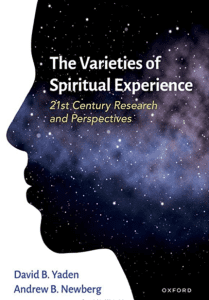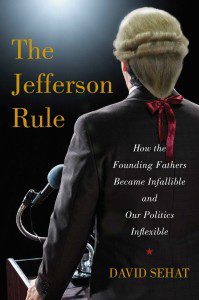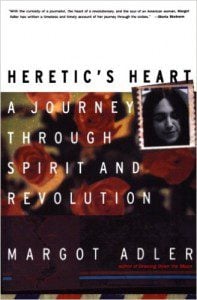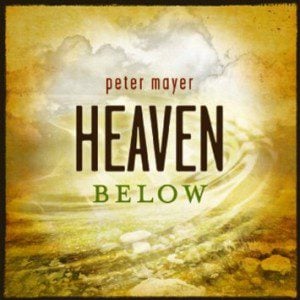Can you feel the Wheel of the Year turning?
Can you feel fall in the air — the chilling breeze and changing leaves, the tell tale signs of winter’s coming?
In this season of each day growing incrementally shorter, can you sense our inexorable movement, here in the Northern Hemisphere, toward Winter Solstice, the darkest day of the year?
If you imagine the year as a circle, our Western, secular calendar marks four major seasonal turning points: Winter Solstice (the darkest day of the year) and Summer Solstice (the longest day of the year) — and in between the Fall and Spring Equinox, when the day is divided into equal parts light and dark. But the Earth-centered traditions (which are the 6th Source of Unitarian Universalism) invite us to attune our sensibilities more finely to the turning of the seasons. In addition to these four most obvious turning points, the ancient pagan traditions invite us literally double our sensitivity to the movement of the seasons: to notice, savor, and celebrate the midpoints (or “cross-quarter days”) that lay between the solstices and equinoxes.
This week we find ourselves approaching one of these midpoints — Samhain or All Saint’s Day, halfway between the Fall Equinox and the Winter Solstice. The Christian liturgical tradition celebrates a three-day festival of All Hallow’s Eve (October 31), All Saint’s Day (November 1), which honors all the saints, the holy men and women who have died, and All Soul’s Day (November 2), which honors all the faithful departed.
Halloween or “All Hallow’s Eve” (the day before All Saint’s Day) is so named because the word hallow means “to make holy” — as in the famous prayer of Jesus that begins “Our Father, who are in heaven, hallowed be your name.” Saints are those men and women who have been recognized as having lived hallowed, holy lives, so the day before their annual recognition day of All Saints is known as All Hallow’s E(v)ening, which over time was shortened to Hallow-e(v)en or “Halloween.” And in both Christian and Pagan traditions, this time of year, halfway between the Fall Equinox and the Winter Solstice, has been recognized as a liminal space — a threshold time.
And these days approaching this sacred time always coincide with my wedding anniversary of October 27. And because my wife and I honeymooned in Mexico, our wedding date meant that we were in the Yucatan Peninsula for Dia de los Muertos (the Day of the Dead), a three day commemoration of those who have gone before us that spans the U.S. version of Halloween, All Saints Day, and All Souls Day.
In Mexico, the ubiquitous homemade altars for Dia de los Muertos are both memorizing and macabre: flickering candle flames surround pictures of departed loved ones, along with flowers, food, and crosses. Fancifully dressed skeletal figures also abound. Thinking back on those homemade altars reminds me of the connection that is sometimes made in English between the words scarred, scared, and sacred. Although these words do not share a common etymological root in English, their similarity is striking, and worth reflecting upon.
Those scary Dia de los Muertos altars point to what is sacred: the memory of those who have died before us. And those memories are often scars on our hearts and psyches. Along these lines, Rudolph Otto gave a famous definition of the sacred as “mysterium tremendum et fascinans.” He understood the sacred as that awe-inspiring, numinous mystery before which we both tremble and find fascinating, before which we are both repelled and attracted. And Samhain, All Saints Day, and Dia de los Muertos all recognize that death, which will happen to us all, is one of those aspects of the human condition that is “mysterium tremendum et fascinans”: a mystery before which we both tremble and find fascinating, are both repelled and attracted.
Religion is one of our human attempts to make sense of such phenomena that are, at once, scarred, scary, and sacred. As the late UU minister Forrest Church used to say, “Religion is our human response to the dual reality of being alive and having to die.” And there is arguably no better time of year to reflect on this existential reality than in the coming sacred, scarred, and scary days of Halloween, Samhain, and All Souls.
One of the most compelling ways of commemorating this time that I have seen is from one of my favorite contemplative theologians Cynthia Bourgeault. She sees an intriguing parallel with the well-known Spring Triduum (which is Latin for “three days”) at the end of what Christians call “Holy Week,” which commemorates the final week of Jesus’ life and includes Maundy Thursday, Holy Friday, and Holy Saturday, which concludes with the Easter Vigil. The parallel Bourgeault sees is with what could be called the Fall Triduum of Halloween, All Saints Day, and All Souls Day. And for a few years now Bourgenault has been leading silent retreats structured around this Fall Triduum.
I’ve posted in the past about the unique characteristics of “The Spirituality of Winter” and “The Spirituality of Spring,” and what is most interesting to me about this idea of a Fall Triduum is the difference in energy, focus, and theme from the spring version. And although Lent, the forty day period before Easter in the Christian tradition, is often observed as a solemn time, the word Lent comes from the root for lengthen, referring to the lengthening days of spring. So, rightly celebrated, one could argue, Lent should be less about penance and more about opening ourselves to potential transformation in our lives — opening ourselves to Resurrection energy, if that’s not too loaded a word — preparing for fruition in our lives, like the flowering of spring after a long winter.
In contrast to the outward, energetic fruition of the Spring Triduum, Bourgenault writes regarding Fall Triduum, through which we will pass this next week, that:
the movement is more inward…. The days are shortening, the leaves are fallen, and the earth draws once again into itself. Everything in the natural world confronts us with reminders of our own mortality…. And yet in the midst of this broody season of dark and inwardness, the days do offer themselves as a journey, a progression we can take…. In the quiet, brown time of the year, these fall Triduum days are an invitation to do the profound inner work: to face our shadows and deep fears (death being for most people the scariest of all)…then to move back into our lives again…. I encourage all of you who have the inclination to keep these days as best you can for this quiet but extraordinary rite of passage.
Perhaps in the future, you may feel led to plan an extended spiritual retreat for the Fall Triduum. For now, the following is a meditation for experiencing this “thin” time and space that can be done almost anywhere:
With your feet flat on the floor, and your hands resting gently in your lap, allow yourself to relax. Take a few deep breaths in…and out. Relax your shoulders and neck. Become more fully present to this moment, this time and place.
Spend some time in contemplative silence (draw, journal, or take a leisurely walk in nature if you prefer). Give yourself some time to remember a few close friends or family members who have died before you.
Allow yourself to perhaps be surprised by whose face emerges for you.
Perhaps there is something you never got a chance to say to them, or something that has happened since they died that you can tell them now. (Whether this experience is for you, for them, or for both will depend on your belief system.)
Remember those beloved ones who have gone before. Remember the gifts and blessings they gave you. Then give yourself permission to respond silently to your beloved ones in the way that feels right to you.
The Rev. Dr. Carl Gregg is a trained spiritual director, a D.Min. graduate of San Francisco Theological Seminary, and the minister of the Unitarian Universalist Congregation of Frederick, Maryland. Follow him on Facebook (facebook.com/carlgregg) and Twitter (@carlgregg).
Learn more about Unitarian Universalism:
http://www.uua.org/beliefs/principles
















